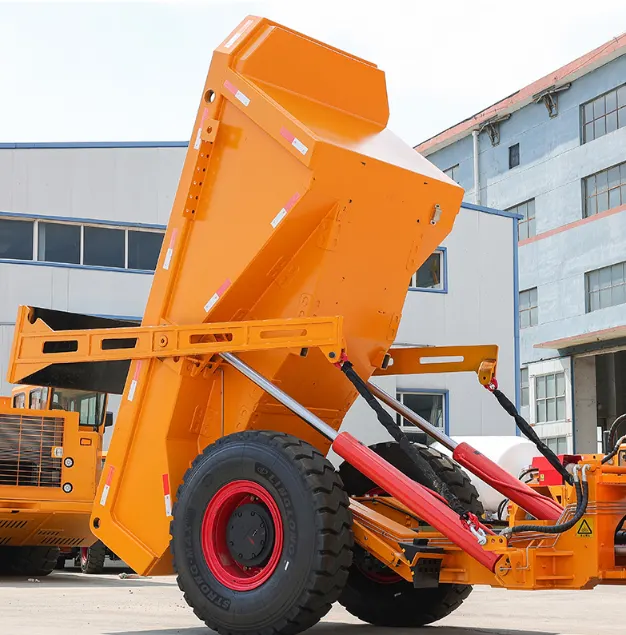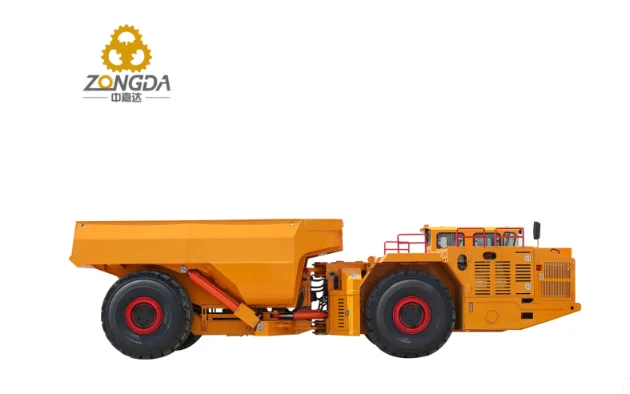
Choosing the right power system for underground mining equipment has become one of the most important decisions mines face today. Diesel machines have been the standard for decades, but electric fleets are getting more common as mines go deeper, heat increases and ventilation pressure rises. Loaders play a role in this transition, but the decision becomes even more critical when you look at your underground mining truck. A truck burns more energy per ton, produces more heat in the drift and usually handles longer haul distances. That means your choice between diesel and electric affects both your cost per ton and your daily workflow.
This guide takes you through the factors that matter most when selecting a truck for different mine conditions, with loaders mentioned only where they influence the haulage cycle.
Why Does Power System Choice Matter So Much for Underground Trucks?
Before choosing between diesel and electric, it helps to look at what actually changes in your haulage cycle. Your truck is usually the largest heat source and one of the biggest emission contributors in an underground fleet. This makes its power system a major factor—especially in deep or hot sections where ventilation expansion becomes difficult or expensive.
How Do Emissions and Ventilation Shape Your Choice?
Diesel underground mining trucks produce exhaust that must be handled through fresh air intake and extraction airflow. Add heat from the drivetrain, turbo temperature and braking system, and ventilation demand rises quickly.
Electric underground trucks remove tailpipe emissions and create far less heat. This shift lowers ventilation pressure and can help mines avoid costly upgrades. Some projects even delay future ventilation or shaft expansion simply because electric trucks reduce the airflow needed to move the same tonnage. In new mines or deeper zones, this advantage often becomes a deciding factor.
How Do Operating Costs Compare?
Diesel trucks rely on fuel, routine engine service, filters and cooling system maintenance. Electric trucks shift the workload to batteries, charging infrastructure and electrical components. In many regions, electricity costs less per unit of energy than diesel, which lowers energy cost per ton over time.
However, battery systems and charging stations can raise upfront investment. Short-term or early-stage mines often stay with diesel, while long-life mines with steady output find electric trucks more cost-effective across multiple years.
Does Noise Matter Underground?
Noise affects more than comfort. A quieter truck makes communication easier at loading points and helps operators notice mechanical changes sooner. Electric trucks run noticeably quieter because electric motors do not create the same vibration or engine hammer. In smaller headings, crews usually feel this difference immediately.
Where Do Diesel Underground Trucks Still Make Sense?
Even with the growth of electric fleets, diesel underground trucks remain the main choice in many operations. Power limitations, long ramps or remote locations often point back to diesel.
Why Do Diesel Trucks Stay Reliable in Tough Conditions?
Diesel trucks have worked in underground mines for many years and have proven their reliability on steep grades, long haul routes and heavy-duty cycles. They do not depend on charging plans, and operators are familiar with their handling. If your mine runs around the clock or faces long travel distances, diesel may still be the simplest option.
Is Infrastructure Simpler With Diesel?
A diesel truck does not require charging equipment, power upgrades or dedicated charging bays. This makes it ideal for early-stage mines, remote projects and operations lacking strong electrical grids. The setup is straightforward: basic diesel storage, standard maintenance and immediate deployment.
How Does a Truck Like the ZDT105 Fit These Scenarios?
The ZDT105 underground mining truck is a compact diesel haulage truck built for medium to narrow tunnels. It carries a practical payload for many metal mines and handles steep gradients commonly found in deep drifts. Its size helps with traffic flow, especially when paired with a loader in the 2 m³ range.
For mines that want a strong diesel solution without oversizing the fleet, this type of truck fits day-to-day needs well.
When Are Electric Underground Trucks the Better Option?
Not every mine can support electric trucks easily, but for certain conditions they outperform diesel in ways that directly affect cost, heat and safety.
How Much Ventilation Can You Save?
Electric trucks change your heat profile. Less heat means lower airflow required for cooling. Mines that already operate close to ventilation limits often see significant gains when switching even part of the fleet to electric.
Deep mines or hot mines experience the largest improvements because ventilation is one of their biggest expenses.
Are Electric Trucks More Efficient?
Electric drivetrains deliver strong torque at low speeds, which helps during uphill hauls and heavy loading in narrow stopes. Energy loss is lower, and regenerative braking reduces wear over time. Once charging stations are fully integrated into the cycle, many mines find electric trucks cheaper to run day after day.
Short haul routes make this advantage even clearer.
Where Do Electric Trucks Struggle?
Electric trucks depend heavily on charging infrastructure. If power is unstable, or if working faces shift often, planning becomes difficult. Long, continuous haul cycles without downtime can also test battery range.
In these situations, diesel trucks may still offer better flexibility.

What Should You Check When Selecting a Truck for Your Mine?
Choosing between diesel and electric starts with checking how well the truck fits your mine layout. Size, grade and haul distance often matter more than the power system itself.
How Should You Match Truck Capacity With Your Loader?
A truck should pair smoothly with your loader so each loading cycle stays efficient. A 2 m³ bucket usually works well with a 10–15 ton truck, keeping the number of passes reasonable.
Oversized trucks or mismatched capacities quickly slow down traffic underground.
Does Tunnel Size Affect Your Choice?
Yes. Your truck must fit every corner, passing bay and loading point. Even a few centimeters matter underground. Ground clearance and turning radius also influence cycle time, especially in tight or irregular drives.
How Do Ramp Grades Influence Power Requirements?
Steep ramps demand reliable torque delivery. Diesel trucks handle long, steep climbs without range concerns. Electric trucks climb well too, but battery levels must be managed carefully during continuous uphill work.
Your steepest ramp often ends up being the deciding factor.
How Should Loaders and Trucks Work Together?
Even though trucks handle most of the haulage, they rely on loaders to keep the cycle moving. A good loader–truck match reduces idle time and avoids bottlenecks.
You can compare with an underground mining truck in similar operations if you want a reference point for sizing.
A Quick Look at ZONGDA
QINGDAO ZONGDA MACHINERY CO., LTD, often called ZONGDA, focuses on underground mining trucks, loaders and utility machines for complex metal mines. Its equipment is built for steep gradients, narrow tunnels and long haul routes. The company supports clients with commissioning, operator guidance and long-term maintenance to help mines maintain stable production.
ZONGDA’s truck range includes models for small and mid-size mines, including machines suited for deep and high-heat sections. For operations planning fleet upgrades, ZONGDA offers practical solutions that work for both diesel setups and future electric transitions.
FAQ
Q1: Are electric trucks always cheaper to run?
A: Not always. Electricity can cost less, but battery systems and charging hardware matter too.
Q2: Do diesel trucks work better on long ramps?
A: Usually yes. They handle long, steep hauls without worrying about battery range.
Q3: Is electric worth it for a small mine?
A: It can be, but only if power supply is stable and ventilation limits are tight.
Q4: Are electric trucks harder to maintain?
A: Not really. The work shifts from engine parts to electrical components.
Q5: How do I choose between diesel and electric?
A: Look at your ventilation limits, ramp grade, power supply and daily operating hours.



